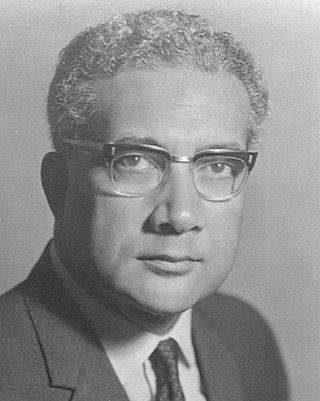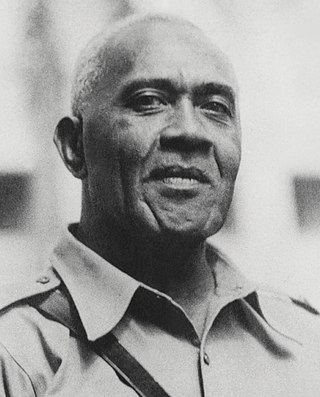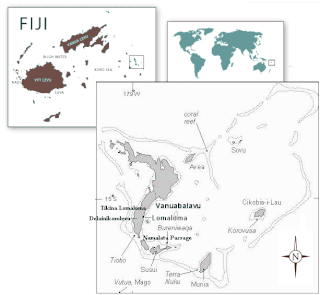
Ratu Sir Kamisese Mara, was a Fijian politician, who served as Chief Minister from 1967 to 1970, when Fiji gained its independence from the United Kingdom, and, apart from one brief interruption in 1987, the first Prime Minister from 1970 to 1992. He subsequently served as President from 1993 to 2000.

Ratu Sir Josefa Lalabalavu Vanayaliyali Sukuna was a Fijian chief, scholar, soldier, and statesman. He is regarded as the forerunner of the post-independence leadership of Fiji. He did more than anybody to lay the groundwork for self-government by fostering the development of modern institutions in Fiji, and although he died a dozen years before independence from the United Kingdom was achieved in 1970, his vision set the course that Fiji was to follow in the years to come.
Tovata is one of three confederacies comprising the Fijian House of Chiefs, to which all of Fiji's chiefs belong.
Ratu Alifereti Finau Mara was a Fijian lawyer, politician, and diplomat. He was best known as the eldest son of former Prime Minister and President Ratu Sir Kamisese Mara. Since December 2001, he held the official position of Roving Ambassador and High Commissioner, representing Fiji's interests in Pacific Island nations. It was reported on 13 March 2006 that he had been chosen to succeed his late father as Paramount Chief of the Lau Islands, but in 2009 the succession was still unclear, with Mara reportedly refusing to discuss the issue with the village elders.

ʻEnele Maʻafuʻotuʻitonga, commonly known as Maʻafu, was a Pacific islander who held important titles in two countries in the Pacific. He was a traditional Tongan Prince and a Fijian chief nominated and installed by the Tovata chiefs of Lakeba and Vanua Balavu as 'Tui Lau' in 1869. This title was ratified by a wider council of Fijian chiefs and subsequently formalised under British colonial administration. In 1847, Maʻafu went to Fiji in an expedition to Vanua Balavu to investigate the killing of a preacher.
The Vuanirewa is the ruling tribe (yavusa) of the Lau Islands, a scattered group of more than a hundred islands and reefs along the eastern edge of Fiji.
Rasolo was a Fijian High Chief.

Lakeba is an island in Fiji’s Southern Lau Archipelago; the provincial capital of Lau is located here. The island is the tenth largest in Fiji, with a land area of nearly 60 square kilometers. It is fertile and well watered, and encircled by a 29-kilometer road. Its closest neighbors are Aiwa and Nayau. Separated by deep sea from the latter but only by shallow waters from the former, when sea levels were lower during glacial episodes Lakeba and Aiwa formed one large island.
Tubou is a village on the Fijian island of Lakeba, with a population of about 2,000. One of eight villages on Lakeba, it is considered the capital of the Lau Islands, being the seat of the Vuanirewa clan, a powerful chiefly family from which Fiji's longtime Prime Minister and President, Ratu Sir Kamisese Mara (1920–2004) and one of Fiji's famous cricketers I. L. Bula, hailed.

Lomaloma is a village at the south of the island of Vanua Balavu in the Lau archipelago of Fiji. The settlement is part of the tribal district of Tikina, Lomaloma and consists of 9 villages, 13 Yavusa (tribes), 42 Mataqali (clans), and 54 family units known as Tokatoka. The nine villages of Lomaloma Tikina are Lomaloma, Sawana, Susui, Narocivo, Namalata, Uruone, Levukana, Dakuilomaloma, and Tuvuca.
Viliame (William) Vuetasau (c.1820-1857) was a Fijian explorer who was the son of Roko Malani, the seventh Roko Sau of Lau and second Tui Nayau and Ciri of Taqalevu. During the reign of his Uncle Taliai Tupou, third Tui Nayau, he was considered heir to the title. He was the first of his noble line to be given a western name, William, after Willam Cary, survivor of the Nantucket whaling ship Oeno that was wrecked in the Lau Islands in 1825. William Cary was rescued by a brother of Malani, who in time became close friends with Malani himself, who named his son after the New Englander, demonstrating his attachment to the shipwrecked sailor.
Roko Taliai Tupou (17??-1875) was a Fijian nobleman. He is considered to be the progenitor of the noble household Vatuwaqa in the chiefly Vuanirewa clan and as such, was the first member of this noble household to hold the title Tui Nayau. His reign marked the growth of Christianity in Lau and the slow expansion of Tongan ambitions in Fiji, led by Enele Ma'afu. As this period marked increasing contact with Europeans, records from this point forward in regard to the history of Lau are well documented.

Sawana is a village on the Fijian island of Vanua Balavu, in the Lau archipelago and is part of the Tikina of Lomaloma.
Tui Lau is a Fijian chiefly title of recent history which was created during the time of Ma'afu and his conquests.

Turaga na Rasau is a traditional Fijian chiefly title of the Lau Islands. Prior to Fiji's colonial days, Fiji had many different Vanua with their own Paramount Chieftain which exercised no authority over the other; a saying from the island of Kadavu aptly summarises it "Nomu Turaga o sega na noqu Turaga" or "Your Chief is not my Chief" also the people of Beqa Island were of a similar opinion saying "Qali Cuva Ki Lagi" or "Subject only to heaven" and would bow to no outside Chieftain, but at the turn of the 20th century aspects of the traditional social structure remained, but for administrative purposes three main Matanitu were solidified and formed as they were the dominant consolidated powers at the time being that of Kubuna, Burebasaga and Tovata. With regard to the Rasau while its traditional origins were in Kubuna on Bau the titles traditional authority in modern Fiji is now in Tovata, Lau in particular Lomaloma Tikina on the Island of Vanua Balavu.
The Turaga na Ravunisa is a Fijian Chiefly title of the Lau Islands, in particular the village of Lomaloma on the Island of Vanua Balavu.
Kapaiwai Tuimacilai Mara, chiefly seafarer, and descendant of the Vunivalu of Bau.
Ratu Tevita Uluilakeba III was the 12th Tui Nayau and Sau ni Vanua of the Lau Islands. He was the father of Ratu Sir Kamisese Mara, founding father of the modern nation of Fiji.

Charles Walker was a Fijian civil servant and Alliance Party politician and diplomat.
Ratu Jione Atonio Rabici "Tom" Doviverata was a Bau chief and medical doctor and administrator in colonial Fiji.









